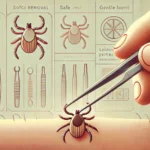When most people think of venomous animals, they typically imagine snakes, spiders, or scorpions. But did you know that some mammals also possess venom? While venom is rare among mammals, there are a few species that have evolved the ability to produce and deliver venom to prey or predators. These mammals use their venom for various purposes, such as defense, hunting, or competition during mating.
In this article, we will introduce you to five venomous mammals you might not have known existed, exploring how they use their venom and why it’s such a unique adaptation.
1. The Platypus: The Venomous Oddball
The Platypus (Ornithorhynchus anatinus) is one of the strangest animals on Earth, and its venomous ability only adds to its list of peculiar traits. Native to eastern Australia, the platypus is a semi-aquatic mammal that lays eggs, has a duck-like bill, and produces venom—an extraordinary combination that has long fascinated scientists.
How Does the Platypus Deliver Venom?
Male platypuses are equipped with venomous spurs on their hind legs. During the breeding season, they use these spurs to inject venom into rivals or threats. The venom can cause extreme pain and swelling in humans, though it is not life-threatening. In the animal kingdom, it likely plays a role in competing for mates or defending territory.
Venom Use and Function
The venom of the platypus is primarily used for intraspecies combat during the mating season, where males fight for dominance. The venom’s effects include intense pain, muscle contractions, and localized swelling, but it is not typically used for hunting or defense against predators.
2. The European Mole: A Venomous Burrower
The European Mole (Talpa europaea) may not look intimidating, but this small burrowing mammal has a secret weapon: venomous saliva. Moles are insectivores, and their venom helps them to immobilize their prey, particularly earthworms, which make up a significant portion of their diet.
How Does the European Mole Deliver Venom?
Moles have venomous saliva that they inject into their prey through their bite. The venom paralyzes the prey, allowing the mole to store live, immobilized earthworms in underground chambers for later consumption. This allows the mole to have a constant food supply in its burrow, especially during the colder months.
Venom Use and Function
The venom is not potent enough to harm larger animals, but it is highly effective in immobilizing smaller creatures, like earthworms and insects. This adaptation helps moles thrive in their subterranean world, where food can be scarce, and long-term storage of prey is advantageous.
3. The Slow Loris: The Toxic Primate
The Slow Loris (Nycticebus spp.) is one of the few venomous primates in the world. Found in Southeast Asia, these nocturnal primates are known for their large eyes, slow movements, and surprisingly, their venomous bite. The slow loris is the only known venomous primate and uses its venom both for defense and in competition with other slow lorises.
How Does the Slow Loris Deliver Venom?
Slow lorises have venomous glands located near their elbows. When threatened, they lick these glands, mixing the secreted venom with their saliva. If they bite an attacker or rival, the venom is delivered through their teeth, causing pain and, in some cases, a severe allergic reaction in humans.
Venom Use and Function
The venom of the slow loris is believed to serve two main purposes: self-defense and competition with other lorises. When faced with a predator, the slow loris will bite to deliver its venom, which can cause pain, swelling, and even allergic shock. The venom can also help the slow loris fend off rivals during territorial disputes.
4. The Solenodon: An Ancient Venomous Mammal
The Solenodon is a small, shrew-like mammal that inhabits parts of the Caribbean, including Cuba and Hispaniola. This nocturnal creature has remained relatively unchanged for millions of years, making it a living relic of a bygone era. One of the most interesting features of the solenodon is its ability to inject venom through grooves in its teeth.
How Does the Solenodon Deliver Venom?
The solenodon delivers its venom through grooves in its lower incisors, making it one of the few mammals capable of injecting venom directly into its prey. This venomous bite helps it subdue small animals, such as insects and other invertebrates, which make up its primary diet.
Venom Use and Function
The venom of the solenodon is used primarily for hunting. By biting its prey, the solenodon injects venom that paralyzes or kills the small creatures it feeds on. While solenodon venom is not dangerous to humans, its bite can cause pain and swelling.
5. The European Shrew: Tiny but Venomous
Shrews may look like harmless, small mammals, but some species, such as the European Shrew (Neomys fodiens), are actually venomous. Shrews have venomous glands that produce toxins used to immobilize their prey, much like moles. These tiny mammals are voracious hunters and use their venom to take down prey that is often larger than themselves.
How Does the European Shrew Deliver Venom?
Shrews deliver their venom through a bite, using venomous saliva secreted by glands in their mouths. This venom allows them to paralyze prey, such as insects, worms, and small vertebrates, before consuming them.
Venom Use and Function
The venom of the shrew is strong enough to incapacitate prey, making it easier for the shrew to consume. While shrew venom is not harmful to humans, a bite from a venomous shrew can cause localized pain and swelling.
Conclusion
While venom is a common adaptation among reptiles, insects, and marine animals, its presence in mammals is rare and fascinating. From the venomous spur of the platypus to the toxic bite of the slow loris, these venomous mammals have developed unique ways to use toxins for defense, hunting, or competition. Understanding the role of venom in these creatures not only sheds light on their evolutionary history but also highlights the diversity of survival strategies in the animal kingdom.
FAQs
Are venomous mammals dangerous to humans?
While some venomous mammals, like the slow loris and platypus, can cause pain or allergic reactions in humans, their venom is generally not life-threatening. However, interactions with these animals should still be approached with caution.
What is the difference between venomous and poisonous mammals?
Venomous mammals inject venom through bites, stings, or spurs, as seen in the platypus or slow loris. Poisonous mammals, on the other hand, would secrete toxins that can cause harm if touched or ingested, but this is extremely rare among mammals.
How do venomous mammals use their venom?
Venomous mammals typically use their venom for hunting, self-defense, or intraspecies competition. For example, the platypus uses its venomous spur to fight other males during the breeding season, while the solenodon uses its venomous bite to subdue prey.
Can venomous mammals regenerate their venom?
Yes, like other venomous animals, venomous mammals can regenerate their venom. The venom-producing glands are capable of producing more venom after it has been used, although this process can take some time depending on the species.
How many species of venomous mammals are there?
Venomous mammals are rare, but a few well-known examples include the platypus, slow loris, solenodon, European mole, and certain species of shrews.


